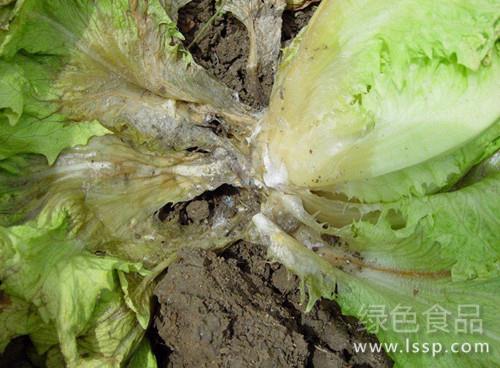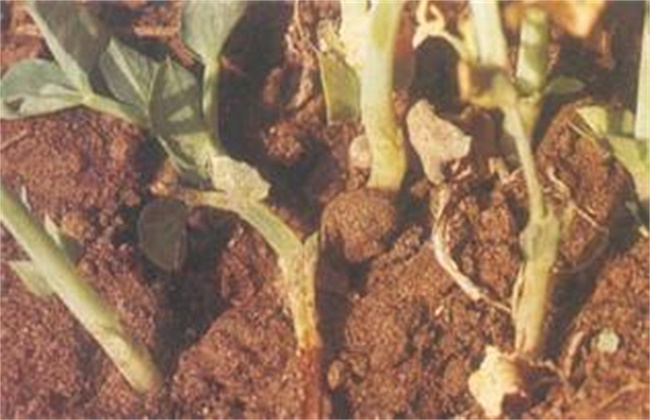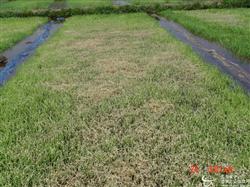base rot Learn more about base rot
-
The latest control methods of pea base rot

Pea is a common vegetable in our life, which is planted widely, but it is prone to basic rot in pea seedling stage, which will cause slow growth, collapse and death of seedlings. So how to control pea base rot? Learn about it with the editor.
2020-11-10 The latest peas base rot disease control methods when we -
Schisandra chinensis stem base rot

The stem base rot of Schisandra chinensis can cause the base of the stem to rot, the root bark to fall off, and finally the whole plant to die. With the expansion of artificial cultivation area, the incidence of stem base rot showed an upward trend. The general incidence rate is 2%-40%, and the serious one is more than 70%. It is a devastating disease. 1. The symptom of stem rot occurred in Schisandra chinensis in all years, and it was serious in 1 ~ 3 years old. The disease begins at the base of the stem or at the junction of the rhizome. At the initial stage of the disease, the leaves wilt and droop like a lack of water, but can not recover.
2019-01-16 -
How to control the soft rot of cabbage after wrapping leaf rot and then leaf ball rot

How to control the soft rot of cabbage after wrapping leaf rot and then leaf ball rot
2018-07-11 -
Control methods of root rot lettuce lodging lettuce soft rot

Control methods of root rot lettuce lodging lettuce soft rot
2018-10-26 -
How does passion fruit stem rot do? How to prevent and cure?

Passion fruit is a perennial evergreen vine, but after industrial cultivation, the planting cycle in most areas is only 2-3 years or even one year, such as Guigang, Guangxi. The main culprit for this reason is the root rot of passion fruit. So how about passion fruit stem rot?
2020-11-09 Passion fruit stem base rot disease how to do how to prevent and control passion -
Know the prevention and control methods of edible fungus diseases and edible fungus-based rot

Methods of controlling Edible Fungi-based Rot
2019-06-03 -
Control methods of root rot of cabbage with browning at the base of stem

Control methods of root rot of cabbage with browning at the base of stem
2018-07-11 -
Harmful symptoms and Control methods of Peanut Stem Rot

Peanut stem rot, commonly known as rotten neck disease, is distributed in all peanut producing areas throughout the country. It generally occurs in the middle and later stages. It wilts and dies soon after being infected. Pods often rot or seeds are dissatisfied, resulting in serious losses. The general field incidence rate is 20% to 30%. In severe cases, it reaches 60% to 70%.
2018-09-06 -
Clivia got soft rot how to do?

Clivia got soft rot disease causes, leaf sheath often dust and organic matter contaminated when fertilizing, etc., to provide conditions for bacteria to invade the plant body, rainy season more areas, especially the southern plum season
2018-06-26 -
Stem rot is easy to cause peanut rot how to control peanut stem rot

Stem rot is easy to cause peanut rot how to control peanut stem rot
2018-07-14 -
Control methods of pea base rot

Control methods of pea base rot
2019-12-17 -
Control of Orchid Base Rot and White Silk Disease

Control of Orchid Base Rot and White Silk Disease
2018-05-04 -
Stem rot of Fugui bamboo

Symptom rich bamboo stem rot will cause plant death and reduce the ornamental value. Mainly from May to September, the weather is muggy, the base of the stem becomes yellow and soft, the interior of the stem will gradually turn red, and the plant will rot from bottom to top. Before planting the control methods, the excellent varieties with certain disease resistance should be selected. Pay attention to water control in peacetime
2018-10-22 -
Identification of common confounding symptoms in rice

1. Several kinds of Ralstonia solanacearum 1. Sclerotinia sclerotiorum. It is more common in the late stage of late rice, which often occurs in clumps in the field, and there are several plants in a hole. The tissue at the base of rice is soft rotten and has dark brown spots. Peeling off the basal leaf sheath and stem, we can see that there are many black sclerotia smaller than amaranth seeds. 2. Bacterial base rot and wilt. Sporadic occurrence in the field, generally 1 in 1 point, 3 plants fell ill, the base of the diseased plant showed rat gray rot, the root system was rare and decayed, peeled off the basal stem, full of smelly water, sterile sclerotia. 3. Physiologically withered. The stem of rice plant shrinks and the base of rice stem is pinched by hand.
2019-01-16 -
Common diseases and control methods of lily

1. Symptoms of bulb and scale rot and stem disease caused by Fusarium: plants with rotten bulbs and scales grow very slowly and their leaves are light green. Underground, brown spots appear at the top of the scales, the sides or where the scales connect with the base plate, these spots gradually begin to rot, and if the base plate stem is infected, then the whole scale ball will rot. The disease in stem and leaf caused by Fusarium is a disease infecting the aboveground part. The distinguishing mark is that the basal leaves turn yellow in adolescence, and the yellowed leaves turn brown and fall off. On the stem
2019-01-16 -
Symptoms of soft rot of Cymbidium

Gentleman orchid, also known as Lycoris radiata, Lycoris macrophylla, is a more common flowering plant, but also a variety that many flower friends like very much. But in the hot summer, Magnolia is very easy to get sick, and soft rot is more likely to occur in summer.
2018-06-26 -
Diagnosis and control of rice seedling rot

Rice seedling rot is a general term for rotten seeds, rotten buds and dead seedlings caused by pathogen infection or non-pathogen influence. It can be divided into two categories: infectious and non-infectious (physiological). Non-infectious rotten seedlings mainly refer to those caused by adverse environment; infectious rotten seedlings refer to those caused by adverse environment, such as Pythium, Fusarium, etc.
2018-09-13 -
Prevention and treatment of heart leaf browning tissue rot and malodorous pineapple heart rot

Prevention and treatment of heart leaf browning tissue rot and malodorous pineapple heart rot
2018-07-11 -
The latest course on techniques and methods of sugarcane tip rot control

Sugarcane tip rot is a phenomenon that the base of infected young leaves lacks green and yellowing, which is narrower than normal leaves, and the leaves are significantly wrinkled, twisted or shortened. it is a fungal disease. the conidia of the pathogen fall to the top and heart leaves with airflow, and then sprout and invade the base of young leaves.
2020-11-10 The latest sugarcane shoot rot disease control technology methods tutorials -
White silk disease of impatiens

Impatiens white silk disease harms plant roots and fruits, causing quenching, root rot, base rot and fruit rot. The disease can harm Iris, orchid, peony, peach, plum and other plants. Symptoms: at the initial stage of the disease, brown-black wet rot occurred at the base of the susceptible plant, followed by white silk mycelium and sclerotia the size of rapeseed. In the later stage of the disease, the seriously susceptible plants were stunted. Pathogen: the pathogen is SclerotiumrolfsiiSacc., which belongs to half-known bacteria.
2019-01-16
